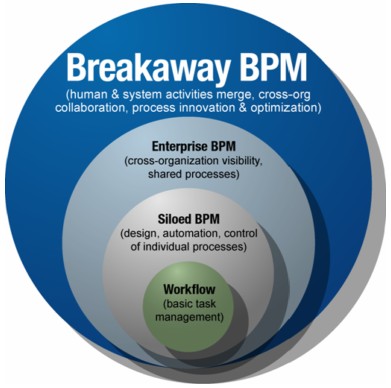James Taylor‘s been at the Gartner Business Intelligence Summit this week. On Monday, he posted some great thoughts on process, rules, BI and agility:
You can use business rules to automate decisions in business processes and then use analytics to optimize these decisions and hence the processes…
You must be able to change a process that you are monitoring when your monitoring tells you that something is wrong. Real-time measurement should not be combined with systems that take weeks or months to change.
Although there are caveats to that last sentence — for example, some real-time measurement is intended to allow the human elements in a process to change rather than the system, such as work re-allocation — I’d still like to have it tattooed on my forehead for every client to read. Making measurements with the intention of enabling agility is useless in many of the BPM installations today, not because the underlying BPMS isn’t agile, but because the customer chooses (or is coerced) to undertake a huge degree of customization that effectively pours concrete over the system.
Then later that day, he posts more on how BPM, BRE and analytics go together like chocolate and peanut butter (that’s my characterization, but I’m sure James would agree) — that seems to be a popular theme at the summit. He also posts about the Tuesday and Wednesday sessions, although less BPM-related than the Monday sessions.
Maybe because I come from the BPM side of the house, I don’t really see why the big fuss to rename parts of the BI space: BI seems to be an outdated term now, referring only to reporting on historical information from a data warehouse or operational data store. Other terms like CPM (corporate performance management), BAM (business activity monitoring), CEP (complex event processing) and EDM (enterprise decision management, which also involves BRE) have sprung up to cover the near-real-time space that I still think of as BI — after all, there’s much of the data aggregation, analytics and other common technology at the core. Many of these newer terms are touted as “[something more fabulous] BI”, such as James’ reference to EDM as “deployable BI”, but it feels a bit like the emperor’s new clothes. Maybe they’re all just BI 2.0.

